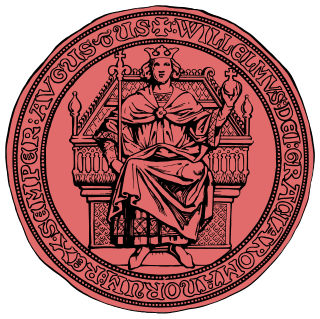
William II was the Count of Holland and Zeeland from 1234 until his death. He was elected anti-king of Germany in 1248 and ruled as sole king from 1254 onwards.

West Friesland is a contemporary region in the Northwest of the Netherlands, in the province of North Holland.

Floris V reigned as Count of Holland and Zeeland from 1256 until 1296. His life was documented in detail in the Rijmkroniek by Melis Stoke, his chronicler. He is credited with a mostly peaceful reign, modernizing administration, policies beneficial to trade, generally acting in the interests of his peasants at the expense of nobility, and reclaiming land from the sea. His dramatic murder, said by some to have been arranged by King Edward I of England and Guy, Count of Flanders, made him a hero in Holland.

The County of Holland was a state of the Holy Roman Empire and from 1433 part of the Burgundian Netherlands, from 1482 part of the Habsburg Netherlands and from 1581 onward the leading province of the Dutch Republic until the Batavian Revolution in 1795. The territory of the County of Holland corresponds roughly with the current provinces of North Holland and South Holland in the Netherlands.

The (First) Battle of Vlaardingen was fought on 29 July 1018 between troops of the Holy Roman Empire and West Frisia. As a result of a trade dispute, Emperor Henry II sent an army towards West Frisia to subdue the rebellious Count Dirk III. However, the Imperial army was decisively defeated and fled in panic.

Kennemerland is a coastal region in the northwestern Netherlands, in the province of North Holland. It includes the sand dunes north of the North Sea Canal, as well as the dunes of Zuid-Kennemerland National Park.

The Battle of Warns was a battle of the Friso-Hollandic Wars between Count William IV of Holland and the Frisians which took place on 26 September 1345. The annual commemoration of the battle is important for many nationalist Frisians. The Frisians won the battle and repelled the 'Hollanders' from the eastern coast of the Zuiderzee.
The Friso-Hollandic Wars, also called Frisian-Hollandic Wars, were a series of short medieval wars consisting of the attempts made by the counts of Holland to conquer the free Frisian territories, which lay to the north and east of their domain. These wars were waged off and on from 1256 to 1297, 1324 to 1348, 1396 to 1411, and from 1421 to 1422, although it could be argued that a state of war continued to exist between the County of Holland and the Frisian territories till well after the year 1500.

The Frisian Kingdom is a modern name for the post-Roman Frisian realm in Western Europe in the period when it was at its largest (650–734). This dominion was ruled by kings and emerged in the mid-7th century and probably ended with the Battle of the Boarn in 734 when the Frisians were defeated by the Frankish Empire. It lay mainly in what is now the Netherlands and – according to some 19th century authors – extended from the Zwin near Bruges in Belgium to the Weser in Germany. The center of power was the city of Utrecht.

Willem van Brederode was Lord of Brederode.
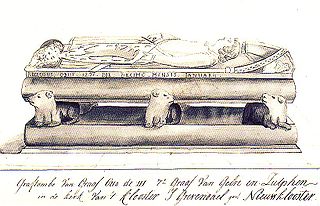
Otto II, Count of Guelders was a nobleman from the 13th century. He was the son of Gerard III, Count of Guelders and Margaretha of Brabant.
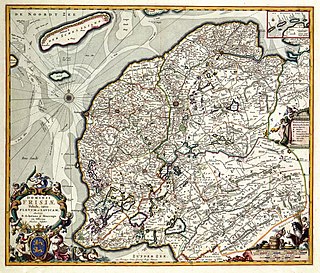
The Lordship of Frisia or Lordship of Friesland was a feudal dominion in the Netherlands. It was formed in 1498 by King Maximilian I and reformed in 1524 when Emperor Charles V conquered Frisia.
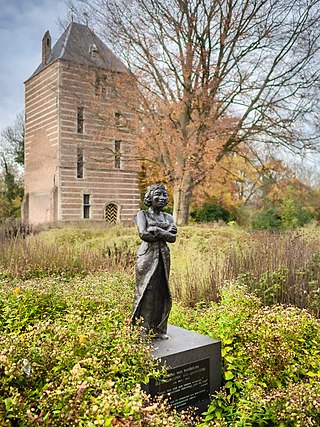
Bertha van Heukelom, was a Dutch noble, the legendary heroine of the Siege of IJsselstein Castle in 1296. She was the daughter of Otto I van Arkel lord of Heukelom and married around 1280 to Gijsbrecht van IJsselstein.
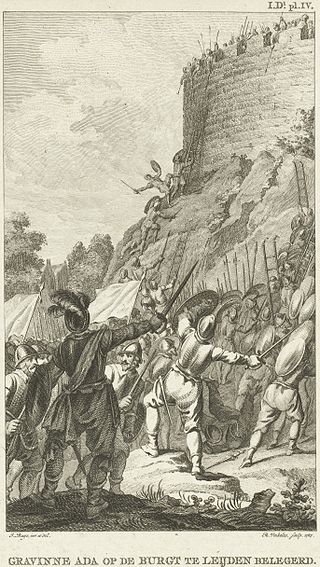
The Loon War was a war of succession over the County of Holland from 1203 until 1206, brought on by the death of count Dirk VII. The war was waged between Dirk's brother William of Frisia, and Dirk's daughter Ada who had quickly married count Louis II of Loon.

Floris I van Haamstede was Lord of Haamstede Castle on Schouwen, and of several other areas in Zeeland, Netherlands.

Wolfert II van Borselen was lord of Veere and Zandenburg.
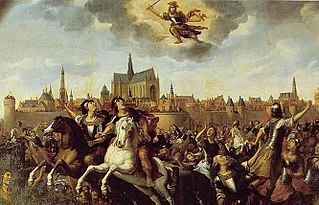
The Kennemer uprising was a rebellion of farmers in the County of Holland and Prince-Bishopric of Utrecht in the Holy Roman Empire, that took place between 1272 and 1274. The commoners or huislieden from the Kennemerland, a bailiwick within the County of Holland, rose up against their bailiff and the other nobles. The movement spread to the nearby West Friesland, Waterland and Amstelland. The lord of Amstelland, Gijsbrecht IV of Amstel decided to join the insurrenction and became the leader of the Kennemers. Later Utrecht, Amersfoort and Eemland also joined. Eventually, the Kennemers were defeated.
The Anglo-Saxon settlement in the Netherlands was a movement of continental Angles, Saxons, Franks and possibly English Anglo-Saxons into the lands formerly inhabited by the ancient Frisii, Cananefates and Batavians. These migrations occurred after the population drop of the Frisii during the 5th century up until the 7th century. These new migrants from northwestern Germany were later referred to as the Frisians by the Merovingian Franks who may have taken this name from older Roman historiography. During these migrations, almost the entire population of the coastal Netherlands was demographically replaced.

The siege of Montfoort took place in 1280 when Count Floris V of Holland attacked the castle of lord Herman VI van Woerden at Montfoort in the Prince-Bishopric of Utrecht. The siege ended after half a year when the soldiers inside the castle surrendered. The primary source for the siege is the Rijmkroniek van Holland by Melis Stoke.

The siege of Vredelant took place from late 1279 to 1280 and was fought between Floris V of Holland and Bishop-Elect John I of Nassau on one side and the rebellious Van Amstel family on the other side. The castle of Vredelant was taken within weeks when Gijsbrecht IV van Amstel was captured by the count's soldiers.

















